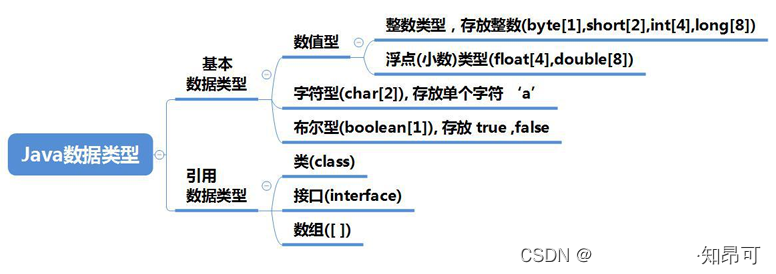1. 简单的入门语法:
1.1 数据类型:
基本数据类型:
整数类型 —— byte、short、int、long,
浮点类型 —— float、double
字符类型 —— char
布尔类型 —— boolean
引用数据类型:
接口(interface)、数组([ ])、类(class)。

1.2 循环怎么写:
1) 顺序控制
2) 分支控制:
1) 单分支 if; 2) 双分支 if-else; 3) 多分支 if-elseif-....-else;4)switch 分支结构
3) 循环控制:for循环;while循环;do..while循环
1.3 数组怎么定义:
先声明数组:语法: 数据类型 数组名[]; 也可以 数据类型[] 数组名; int a [ ]; 或者 int[ ] a;
创建数组: 语法: 数组名=new 数据类型[大小]; a = new int[10];
1.4 函数是怎么写的
修饰符 返回值类型 函数名称(参数类型 参数1,参数类型参数2, . . . ){
函数执行代码;
return 返回值;
}
public static int addFunc (int a,int b) {
return a+b;
}
返回值类型:函数运行后的结果类型
参数类型:是形式参数的数据类型
形式参数:是一个变量,由于存储调用函数时传递给函数的实际参数
实际参数:传递给函数的具体值
return:用于结束函数
返回值:函数运算后的结果值,该值会返回给该函数的调用者
注意:当函数没有返回值类型是用void来表示
如果返回值类型是void,name函数中的return语句可以省略不写
2.用这个编程语言实现基础的数据结构:
2.1 顺序表:
顺序表的实现:
public class SeqList{
private int length;//表长
private int[] datas;//数据
}
顺序表的创建和初始化:
/**
* 创建空的顺序表
*/
public SeqList() {
}
/**
* 创建一个指定容量的顺序表
*
* @param capacity
*/
public SeqList(int capacity) {
length = 0;
datas = new int[capacity];
}
/**
* 构造指定容量和指定数组元素的顺序表
* @param capacity
* @param array
*/
public SeqList(int capacity, int[] array) {
if (capacity < array.length) {
throw new IndexOutOfBoundsException();
} else {
length = 0;
datas = new int[capacity];
for (int i = 0; i < array.length; i++) {
datas[i] = array[i];
length++;
}
}
}
/**
* 初始化表的最大容量
*
* @param capacity
*/
public void create(int capacity) {
if (datas != null) {
throw new RuntimeException();
} else {
length = 0;
datas = new int[capacity];
}
}
获取指定下标的元素:
/**
* 获取指定下标的元素
*
* @param index
* @return
*/
public int get(int index) {
if (index <= length && index >= 0) {
return datas[index];
} else {
throw new IndexOutOfBoundsException();
}
}
指定位置插入元素:
/**
* 指定位置插入元素
*
* @param index
* @param element
*/
public void insert(int index, int element) {
if (index >= length || index < 0) {
throw new IndexOutOfBoundsException();
} else {
if (length + 1 <= datas.length) {
for (int i = length; i > index; i--) {
datas[i] = datas[i - 1];
}
datas[index] = element;
length++;
} else {
System.out.println("表已满,无法插入");
}
}
}
删除指定下标元素:
/**
* 删除指定下标元素
*
* @param index
*/
public void delete(int index) {
if (index < 0 || index >= length) {
throw new IndexOutOfBoundsException();
} else {
for (int i = index; i < length - 1; i++) {
datas[i] =




 最低0.47元/天 解锁文章
最低0.47元/天 解锁文章

















 2258
2258










